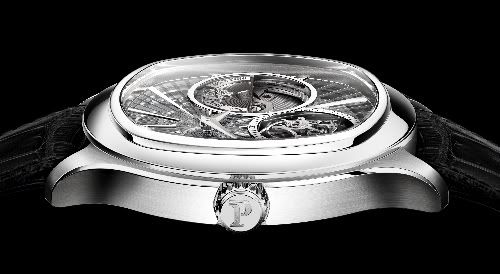Heraldry (the science of armorial bearings) has to most of us a bit of a dusty image. But when you scratch beyond the surface you enter a world could be the stage for the next Dan Brown thriller, and even everybody's favorite spy, James Bond, posed as a member of the College of Arms when infiltrating Blofeld's stronghold in the Swiss Alps. Also the origin of Heraldry is quite exciting since it can be found in the middle ages when knights wore shields with their family crest on it, so they could be identified in both tournaments and battle.
Heraldry can also be of interest for watch connoisseurs, because some brands have actually a coat of arms that is connected to the founding family and can there for be used by the brand. Perhaps the best known example of this is Piaget.
Finding the history and meaning of a particular coat of arms can be quite challenging. Most of the time this means tracing it literally throughout history backwards, and not through Google. Ancient libraries have to be visited, writings in old fashioned English, French or German consulted and a lot of time and effort invested. And even then it is possible that the whole story can never be told.
With the Piaget coat of arms at least a great deal has been discovered and some of them are quite surprising!
Let's start with the lion on top of the coat of arms, and more specifically what he is holding.This is a farming tool referred to as a scourge or flail. This device was used to beat for example grain out of their husks. It's precise meaning in the coat of arms is not known but it is believed to be a reference of the Piaget's family origin.


Interesting is that also the P from Piaget appears on the coat of arms, as we already know it from for example the crowns of their watches. Another reference to the Piaget name can be found by the little bird at the bottom of the coat of arms. This bird is a magpie, or in French simply “Pie”, and refers to the Pi in Piaget. Apart for that stands this bird in the heraldry also for foresight due to its tendency to build its nest in the highest trees and reinforce it with bushes and spines to create a safe “stronghold” for it's off spring. The heraldry does not recognize the commonly known interest of magpie's into beautiful, shiny objects to decorate its home although it is quite appropriate in this matter.

Some people might have recognized the three Fleur-de-lys on the coat of arms. In general this symbol is connected to nobility and more specific the French Monarchy. This symbol could end up on a Swiss coat of arms when its owner supported the French kings with soldiers to fight for their causes, something the Swiss did quite frequently in history. In return the right was granted (undoubtedly amongst other privileges) to include this symbol in their coat of arms.
A some things on the coat of arms could not (yet) be traced. So are the two reamed crosses not connected to the Swiss federal cross and could its true origin not be located.Also the exact age of the coat of arms could not be pinpointed but the design is typical for the 18th century.
All together gives this some insight in the story behind the Piaget coat of arms and the history of the Piaget-family itself. So maybe next time you see it on the dial, rotor or movement of a Piaget, you look not only at a coat of arms, but also the story behind it, and that is something that watch making and heraldry have in common.
Special thanks to Piaget USA for this information
